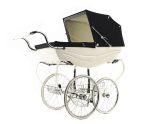A frosty winter wonderland is fun to experience — outside. Inside is another story. By keeping your home heating system running at peak performance, you’ll lower your winter utility bills and experience increased comfort.
According to North American Technician Excellence (NATE), here’s how to stay toasty this winter without breaking the bank:
Get the right equipment
Choosing a furnace with an ENERGY STAR logo is important; however, it’s also a good idea to understand standard efficiency ratings so you can compare the performance of systems.
When you need to measure the thermal efficiency of your furnace or water heater, Annual Fuel Utilization Efficiency helps determine the annual average efficiency of that piece of equipment. It measures the amount of heat delivered to your house compared to the amount of fuel that you must supply to the furnace. The U.S. Department of Energy determined that all furnaces sold in the U.S. must have a minimum AFUE of 78%.
The Heating Seasonal Performance Factor is the most commonly used measure of the heating efficiency of heat pumps. Typically, a high-efficiency heat pump pays for itself in savings in a few years.
Take these steps
• Check heating filters every couple weeks and change them at least twice in the season, or as directed by the manufacturer.
• Check and maintain insulation. Improperly insulated walls, floors, attics, basements and crawlspaces drain away heat and also can lead to moisture imbalance.
• Check ductwork for insulation and leaks. No matter how “state of the art” your heating system is, if your ductwork is bad, it will diminish efficiency.
• Turn down the thermostat by a few degrees and dress warmly.
• Clean the furnace area. Don’t keep chemicals or cleaning products near your heater, and don’t store anything next to it that could impede ventilation.
• Keep vents and returns free of obstructions.
• Install a humidifier to make indoor air feel warmer.
Work with the experts
Be sure work performed on your heating equipment is carried out by a certified technician. Even the most efficient system can suffer if it’s not properly maintained.





























